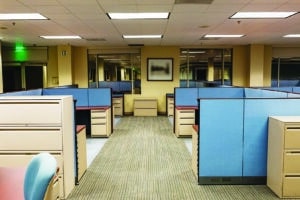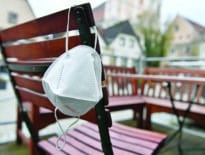
Developers are testing various options for the future of underutilized office properties in Boston suburbs, including labs, light manufacturing and high-bay industrial space. iStock photo
Unease and uncertainty now plague the office real estate industry, both in Greater Boston and globally. New research by Cushman & Wakefield claims 1.4 billion square feet of office space will be obsolete by 2030.
In Greater Boston urban areas, cities have considered rezoning to allow for residential conversion, but that will prove difficult since office floor plates cover a large area. This has owners, lenders, and local municipalities all wondering: What do we do with this empty space?
To understand where the office market is headed, we should understand what led to oversupply in Greater Boston. Inside Interstate 495, Boston’s office supply totals roughly 110 million square feet, of which about one-third was built after 1995. The savings-and-loan crisis of the early 1990s gave way to unprecedented office demand during the dot-com era.
The internet created oversupply on both ends of the cycle, fueling the high demand that led to overbuilding during the tech boom and now to lack of demand due to technology such as Zoom and Microsoft Teams. Digitally enabled workers can operate anywhere, and that has caused office users to downsize and opt for smaller footprints. The internet giveth, the internet taketh away.
Declining demand is nothing new as suburban office occupancy has been between 83 to 85 percent over the last three decades. The work–from–home model simply accelerated the trend for office’s largest users: technology companies. The lasting impact of this shift will require much of the existing inventory to be repositioned into something else.
Converting office buildings to lab space has been prevalent. In the 128 Central submarket, over 12.8 million square feet of space has been converted to labs since 2018. Office buildings built for tech companies in the 1990s and early 2000s typically required ample power for server rooms, loading docks to send out software via physical disks and deck–to–deck spacing to allow for air flow in open office areas that were packed with cubicles. These attributes provide infrastructure that can be utilized for lab space.
Deciding to Demolish
Alternatively, the demand for flex space has been growing steadily. Uses such as light manufacturing, research and development, light assembly and clean warehousing for products like medical devices struggle finding space in Greater Boston. Many office buildings can convert to this type of use because they are temperature controlled, as opposed to much of the single-story flex market that is only heated.

Mike Ogasapian
In multi-story buildings, installing a freight elevator and adding loading docks can allow for subdivision. Most flex users range in size between 10,000 to 30,000 square feet while office floor plates are between 50,000 to 60,000 square feet. These uses are much simpler compared to lab, and typically entail delivering open space with vinyl composition tile and removing 60 to 80 percent of the ceiling grid.
The third trend is simply scrapping existing offices for high–bay industrial buildings with 32-foot or higher clear heights. Along I-495 in 2020, Calare Properties scrapped 120,000 square feet of office at 50 Nagog Park in Acton for a new 120,000-square-foot industrial building, and Northbridge Partners took down nearly 100,000 square feet of office space at 151 Taylor St. in Littleton for a 160,000-square-foot industrial building that is leased to Amazon. DH Property Holdings recently received approval to demolish a 2-story office building at 270 Billerica Road in Chelmsford to build 100,000 square feet of high-bay industrial space.
As with the greater economy, real estate is cyclical and that the trends that are playing out today in one asset class do not mean they will be the same in five, 10 or 20 years. Despite the current state of the office market, several large office users such as AT&T, JPMorgan Chase and Amazon have all given mandates to their employees to return to the office for part of the week. But while there is some hope of a day where office demand returns, a better future is where oversupply is utilized differently and more efficiently.
Mike Ogasapian is a vice president at R.W. Holmes in Wayland.






